Peter Lanyon (British, 1918-1964)Still Air
signed and dated 'Lanyon 61' (lower left); further signed, titled and dated again 'STILL AIR/Lanyon Sept 61' (verso)
oil on canvas
91.1 x 122 cm. (35 7/8 x 48 in.)FootnotesProvenance
Jonathan Lanyon
Sale; Sotheby's, London, 27 June 1979, lot 211
Professor Ball
With Bernard Jacobson Gallery, London
Private Collection, U.K.
Exhibited
New York, Catherine Viviano Gallery, Lanyon, 30 January-17 February 1962, cat.no.13
San Antonio, Marion Koogler McNay Art Institute, Paintings by Peter Lanyon, 24 February-March 1963
London, Tate Gallery, Peter Lanyon, organised by the Arts Council of Great Britain, 30 May-30 June 1968, cat.no.70
London, Archer Gallery, Two by Seven: Bryan Wynter, William Scott, Peter Lanyon, Josef Herman, Heinz Henghes, Paul Feiler, Ralph Brown, 8 November-1 December 1972, cat.no.5
London, Bernard Jacobson Gallery, Peter Lanyon: Landscapes 1946-1964, 2-27 April 1991, cat.no.21
Literature
Andrew Causey, Peter Lanyon: His Painting, Aidan Ellis Publishing, Henley-on-Thames, 1971, p.64, cat.no.170
Toby Treves, Peter Lanyon, Catalogue Raisonné of the Oil Paintings and Three-Dimensional Works, Modern Art Press, London, 2018, p.505, cat.no.489 (col.ill.)
Peter Lanyon's gliding paintings are a body of work which represent the pinnacle of his achievements as a painter. Lanyon was a master at corralling his experience of the elements and transposing these onto canvas, in a way that can transport the viewer to his native Cornwall almost instantly. He joined the Cornish Gliding Club at Perranporth Airfield in June of 1959, and was tragically to die in 1964, aged only forty-six, as a result of an accident while gliding, but it was this past-time that was to provide the impetus for so many of his most successful paintings. Still Air is one such painting.
The present lot, with its expanses of grey-white paint and streaks of deep blue and ochre, is unusual in Lanyon's output both for the sparing use of paint and the capacious expanse which Lanyon conjures on the canvas. As Lanyon was to comment, he was preoccupied with depicting space itself, and Still Air is a particularly successful example of this endeavour. He noted that: 'A painter's business is to understand space – the ambient thing around us. I don't mean the old approach to landscape – sitting in one place and taking the view, as you get in traditional painting. What I'm concerned with is moving around in this space and trying to describe it. That's one reason I go in for fast motor-racing, cliff-climbing and gliding – gliding particularly: I like using actual air currents; I feel I'm getting to the root of the matter.' (Peter Lanyon quoted in Toby Treves, Peter Lanyon: Catalogue Raisonné of the Oil Paintings and Three-Dimensional Works, Modern Art Press, London, 2018, p.30).
In Still Air, Lanyon has succeeded in translating this quest for depicting the elements in the most truthful way. A mass of pale grey-white covers most of the surface, which feels almost thick and foggy in its obfuscating opacity, and in the way whispers of blue paint blend into it, emerge from it, or seem suspended in its midst. For Lanyon, the way in which the paint was applied to the canvas carries huge feeling and meaning: as Toby Treves has written, for Lanyon 'the gestural brushstroke was invested with physical and emotional qualities: movement and by extension time were intrinsic; the mark could be light or heavy, fast or slow, strong or feeble, confident or hesitant, angry or calm, violent or tender'. He goes on to comment that: 'The range of sensations and moods that he was able to convey in those works, which are perhaps his supreme achievement, is a measure of his mastery of the manner' (Ibid., p.18).
The present work is no exception. A deep blue with a hint of teal is swept across the canvas, marking out what could be jagged rocks or rushing sea, while golden ochre gives the suggestion of fields of golden corn, ready for harvest, which would have been timely considering the painting was executed in September 1961. The finesse and feeling which Lanyon imbues in each stroke shows his command of the medium. The ochre appears to be brushed on rapidly, while there is an almost calligraphic élan to the singular strokes of deep blue in the lower left corner of the work, while the smudging and subtlety to the hints of blue paint elsewhere are particularly unusual. As Toby Treves has observed, 'the extent to which the colours and forms are softly blurred is unique within the oeuvre', an effect which has been achieved by using paint which has been thinly diluted, and brushed carefully over the under-painting (Ibid., p.504). This expressive use of paint has lent Still Air a particularly meditative calm: it is easy to imagine him floating through the sky, looking down on a patchwork landscape below, partly obscured by fog or mist.
Lanyon's titles are particularly atmospheric and descriptive, and it is easy to get lost in the lyrical tribute that each work pays to the landscape that he flew through. Still Air is just one of so many paintings which capture his experiences: Gusting, Cliff Wind, Soaring Flight, Spring Rain, Weathering, Strange Coast – these titles could almost read as a short poem themselves, so descriptive yet enigmatic are they. The very month that Still Air was completed, Lanyon was elected Bard of Cornish Gorsedd for his services to Cornish Art, on 2nd September 1961. Considering the title of this painting and the others mentioned above, his Bardic name - Marghak an Gwyns (Rider of the Wind) – is particularly fitting.
Lanyon wrote that 'art is a communication of life to the living' (Peter Lanyon, letter to Terry Frost, quoted in Ibid., p.21), and Still Air is a particularly fitting example of this. Toby Treves has summed up this transfiguration of paint to feeling in Lanyon's work incredibly succinctly: 'We do not need to be Cornish or to go to Penwith or to be Peter Lanyon to know what it feels like to carry a landscape inside ourselves; we just need to go to that place, wherever it is, that occupies us, as Penwith did him. We do not need to read science or philosophy to accept that we are in a condition and a system of permanent change or to know that our sensate bodies are the source of much of our experience of being in the world; we just need to take a walk. The weather is not an elite phenomenon, and nor is the air. And most of us are acquainted with the great human emotions, or will be soon. Lanyon painted about these things to share them, to let us know that he had been where we are.' (Ibid., p.22). Still Air is a masterful translation of this ordinary but universally uplifting feeling: it transports us into the elements, to where we can feel the cool breath of autumnal air on our skin, enjoy the whip of wind as it blurs our vision, and experience the landscape as he saw it.
Peter Lanyon (British, 1918-1964)Still Air
signed and dated 'Lanyon 61' (lower left); further signed, titled and dated again 'STILL AIR/Lanyon Sept 61' (verso)
oil on canvas
91.1 x 122 cm. (35 7/8 x 48 in.)FootnotesProvenance
Jonathan Lanyon
Sale; Sotheby's, London, 27 June 1979, lot 211
Professor Ball
With Bernard Jacobson Gallery, London
Private Collection, U.K.
Exhibited
New York, Catherine Viviano Gallery, Lanyon, 30 January-17 February 1962, cat.no.13
San Antonio, Marion Koogler McNay Art Institute, Paintings by Peter Lanyon, 24 February-March 1963
London, Tate Gallery, Peter Lanyon, organised by the Arts Council of Great Britain, 30 May-30 June 1968, cat.no.70
London, Archer Gallery, Two by Seven: Bryan Wynter, William Scott, Peter Lanyon, Josef Herman, Heinz Henghes, Paul Feiler, Ralph Brown, 8 November-1 December 1972, cat.no.5
London, Bernard Jacobson Gallery, Peter Lanyon: Landscapes 1946-1964, 2-27 April 1991, cat.no.21
Literature
Andrew Causey, Peter Lanyon: His Painting, Aidan Ellis Publishing, Henley-on-Thames, 1971, p.64, cat.no.170
Toby Treves, Peter Lanyon, Catalogue Raisonné of the Oil Paintings and Three-Dimensional Works, Modern Art Press, London, 2018, p.505, cat.no.489 (col.ill.)
Peter Lanyon's gliding paintings are a body of work which represent the pinnacle of his achievements as a painter. Lanyon was a master at corralling his experience of the elements and transposing these onto canvas, in a way that can transport the viewer to his native Cornwall almost instantly. He joined the Cornish Gliding Club at Perranporth Airfield in June of 1959, and was tragically to die in 1964, aged only forty-six, as a result of an accident while gliding, but it was this past-time that was to provide the impetus for so many of his most successful paintings. Still Air is one such painting.
The present lot, with its expanses of grey-white paint and streaks of deep blue and ochre, is unusual in Lanyon's output both for the sparing use of paint and the capacious expanse which Lanyon conjures on the canvas. As Lanyon was to comment, he was preoccupied with depicting space itself, and Still Air is a particularly successful example of this endeavour. He noted that: 'A painter's business is to understand space – the ambient thing around us. I don't mean the old approach to landscape – sitting in one place and taking the view, as you get in traditional painting. What I'm concerned with is moving around in this space and trying to describe it. That's one reason I go in for fast motor-racing, cliff-climbing and gliding – gliding particularly: I like using actual air currents; I feel I'm getting to the root of the matter.' (Peter Lanyon quoted in Toby Treves, Peter Lanyon: Catalogue Raisonné of the Oil Paintings and Three-Dimensional Works, Modern Art Press, London, 2018, p.30).
In Still Air, Lanyon has succeeded in translating this quest for depicting the elements in the most truthful way. A mass of pale grey-white covers most of the surface, which feels almost thick and foggy in its obfuscating opacity, and in the way whispers of blue paint blend into it, emerge from it, or seem suspended in its midst. For Lanyon, the way in which the paint was applied to the canvas carries huge feeling and meaning: as Toby Treves has written, for Lanyon 'the gestural brushstroke was invested with physical and emotional qualities: movement and by extension time were intrinsic; the mark could be light or heavy, fast or slow, strong or feeble, confident or hesitant, angry or calm, violent or tender'. He goes on to comment that: 'The range of sensations and moods that he was able to convey in those works, which are perhaps his supreme achievement, is a measure of his mastery of the manner' (Ibid., p.18).
The present work is no exception. A deep blue with a hint of teal is swept across the canvas, marking out what could be jagged rocks or rushing sea, while golden ochre gives the suggestion of fields of golden corn, ready for harvest, which would have been timely considering the painting was executed in September 1961. The finesse and feeling which Lanyon imbues in each stroke shows his command of the medium. The ochre appears to be brushed on rapidly, while there is an almost calligraphic élan to the singular strokes of deep blue in the lower left corner of the work, while the smudging and subtlety to the hints of blue paint elsewhere are particularly unusual. As Toby Treves has observed, 'the extent to which the colours and forms are softly blurred is unique within the oeuvre', an effect which has been achieved by using paint which has been thinly diluted, and brushed carefully over the under-painting (Ibid., p.504). This expressive use of paint has lent Still Air a particularly meditative calm: it is easy to imagine him floating through the sky, looking down on a patchwork landscape below, partly obscured by fog or mist.
Lanyon's titles are particularly atmospheric and descriptive, and it is easy to get lost in the lyrical tribute that each work pays to the landscape that he flew through. Still Air is just one of so many paintings which capture his experiences: Gusting, Cliff Wind, Soaring Flight, Spring Rain, Weathering, Strange Coast – these titles could almost read as a short poem themselves, so descriptive yet enigmatic are they. The very month that Still Air was completed, Lanyon was elected Bard of Cornish Gorsedd for his services to Cornish Art, on 2nd September 1961. Considering the title of this painting and the others mentioned above, his Bardic name - Marghak an Gwyns (Rider of the Wind) – is particularly fitting.
Lanyon wrote that 'art is a communication of life to the living' (Peter Lanyon, letter to Terry Frost, quoted in Ibid., p.21), and Still Air is a particularly fitting example of this. Toby Treves has summed up this transfiguration of paint to feeling in Lanyon's work incredibly succinctly: 'We do not need to be Cornish or to go to Penwith or to be Peter Lanyon to know what it feels like to carry a landscape inside ourselves; we just need to go to that place, wherever it is, that occupies us, as Penwith did him. We do not need to read science or philosophy to accept that we are in a condition and a system of permanent change or to know that our sensate bodies are the source of much of our experience of being in the world; we just need to take a walk. The weather is not an elite phenomenon, and nor is the air. And most of us are acquainted with the great human emotions, or will be soon. Lanyon painted about these things to share them, to let us know that he had been where we are.' (Ibid., p.22). Still Air is a masterful translation of this ordinary but universally uplifting feeling: it transports us into the elements, to where we can feel the cool breath of autumnal air on our skin, enjoy the whip of wind as it blurs our vision, and experience the landscape as he saw it.
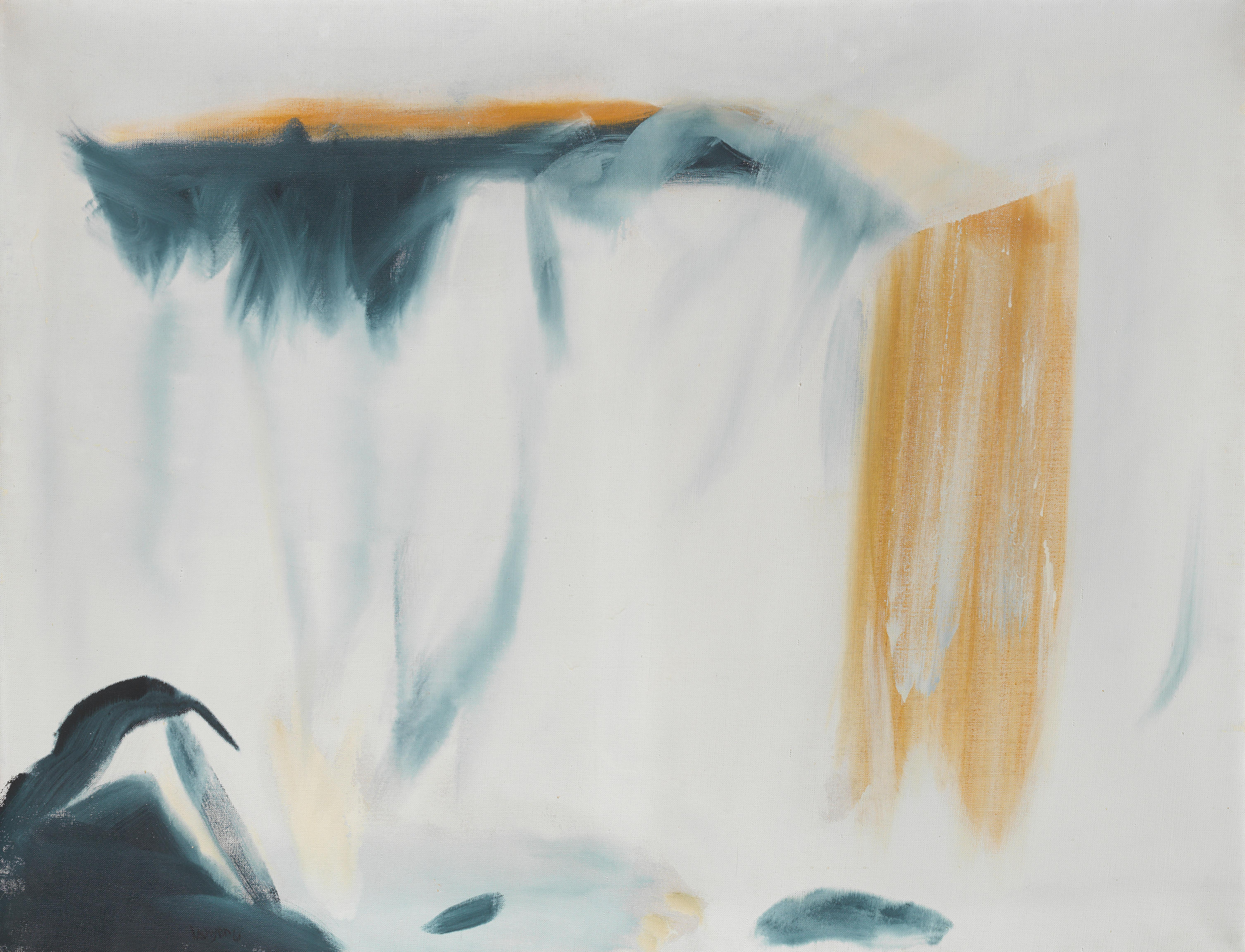
.jpg)
.jpg)


.jpg)
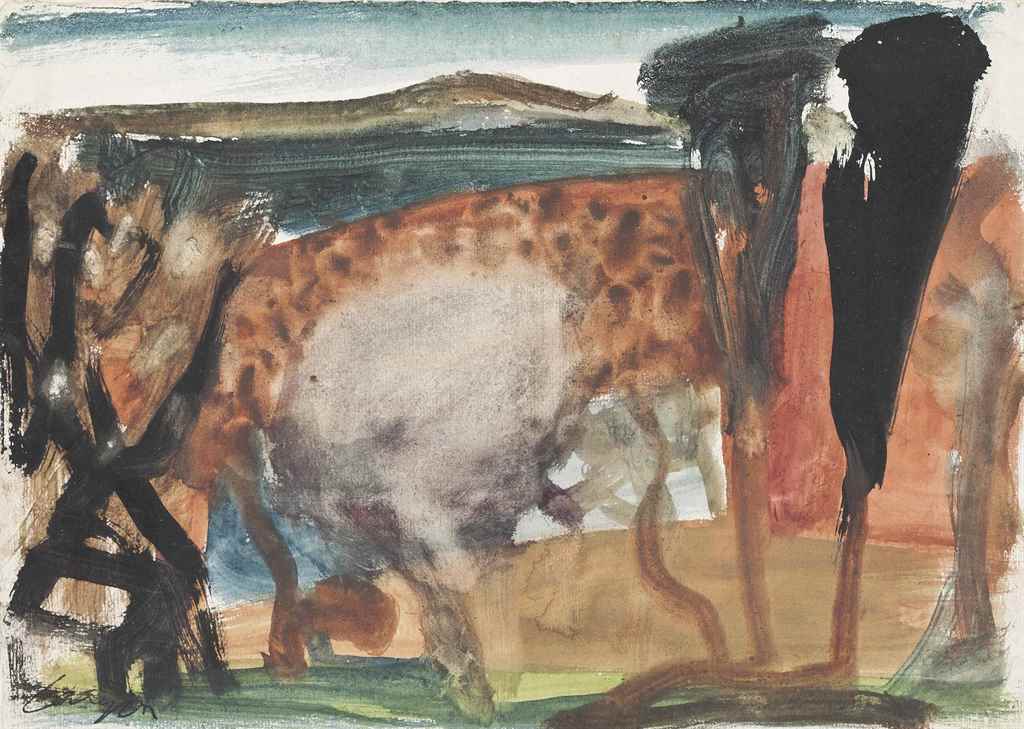
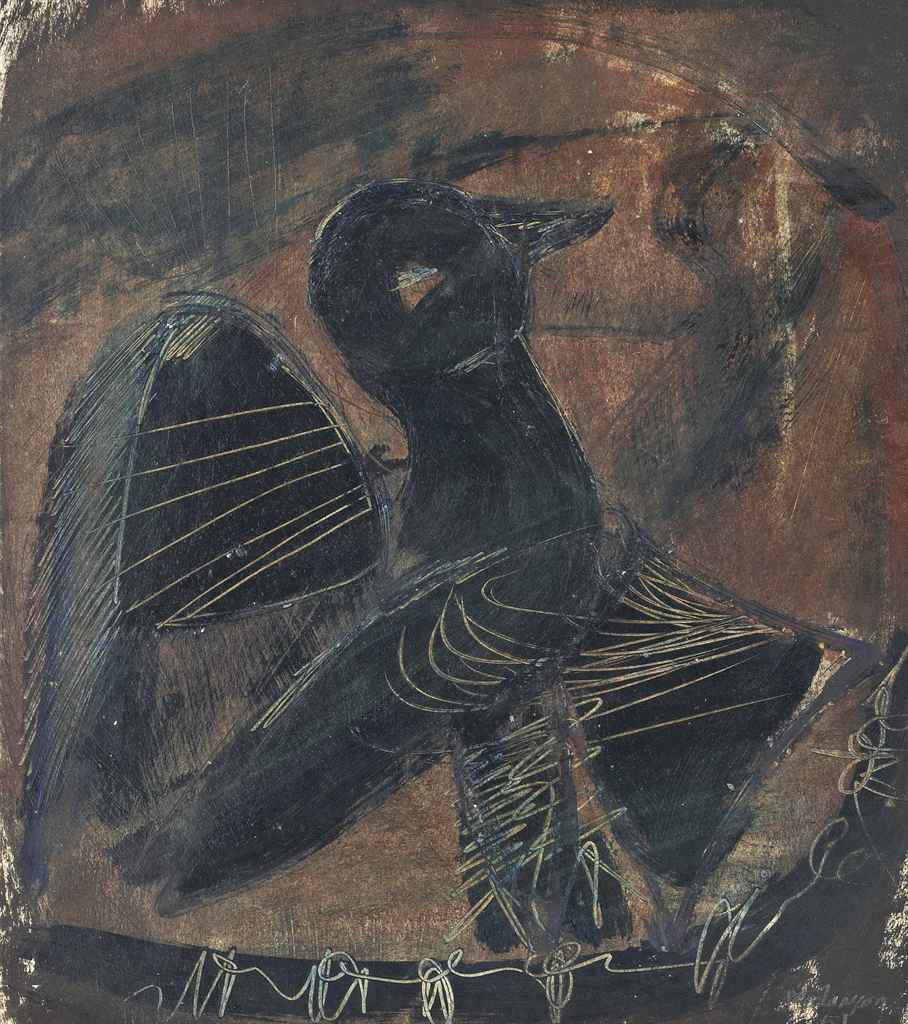
.jpg)
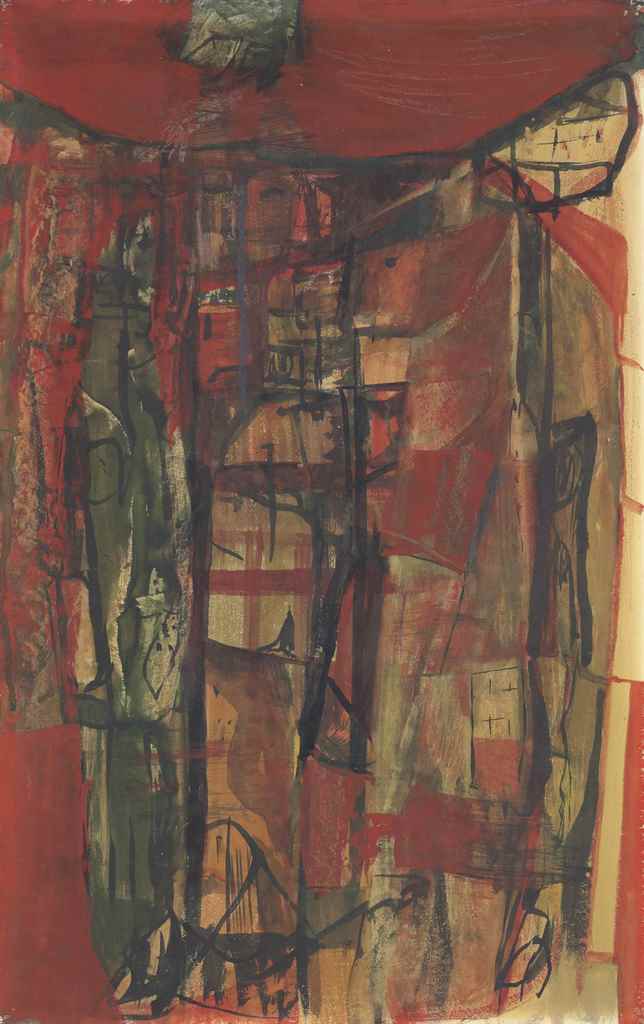
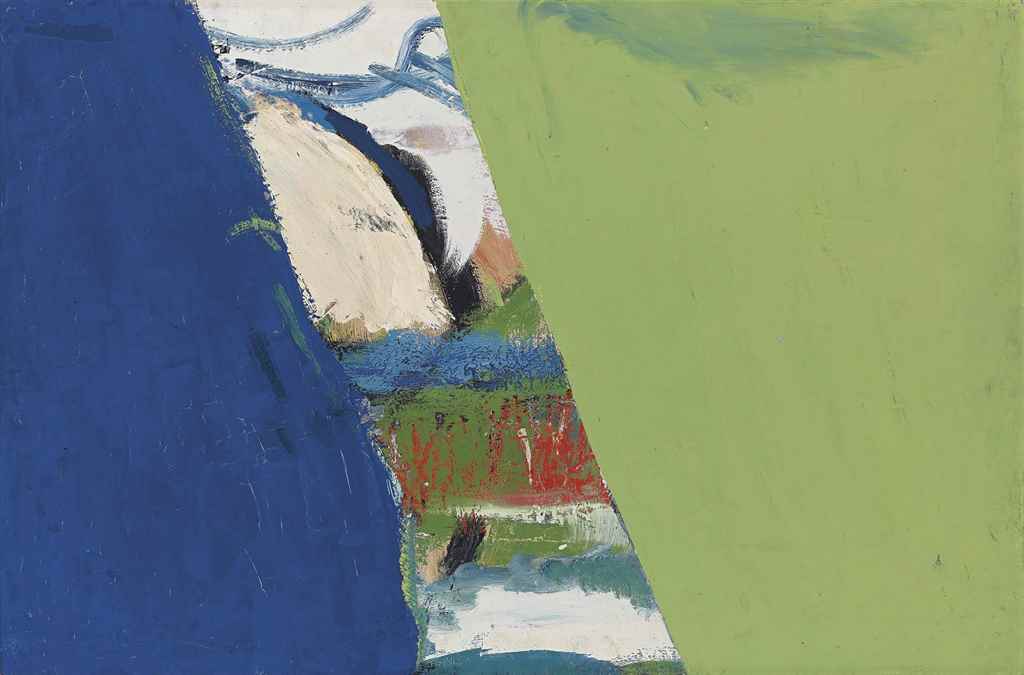
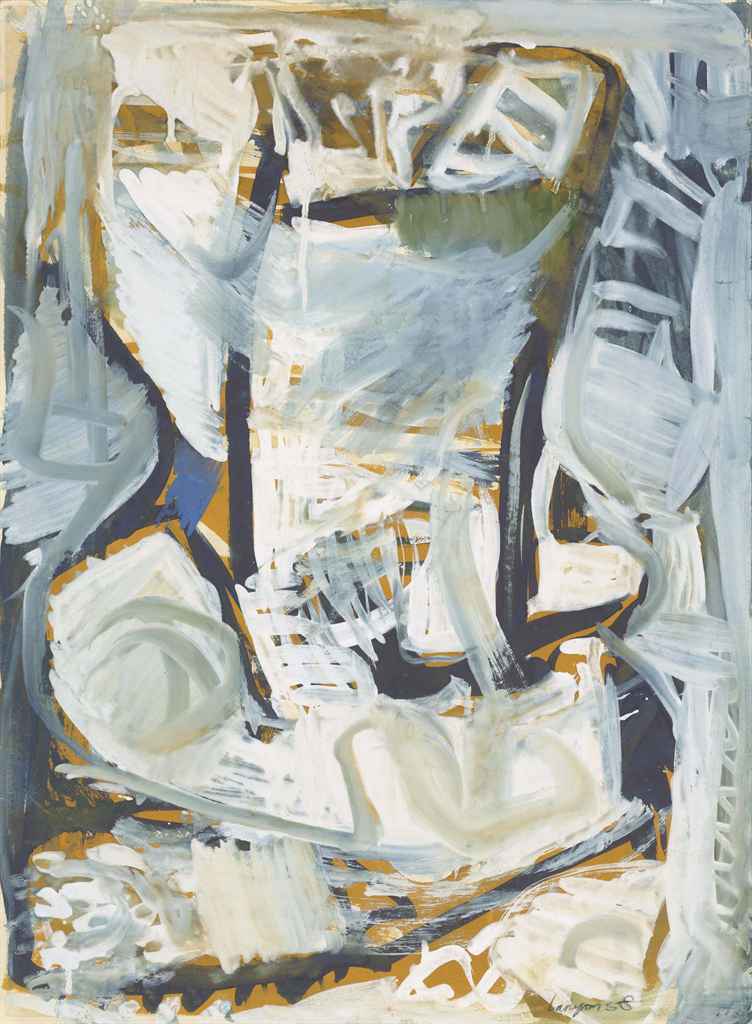

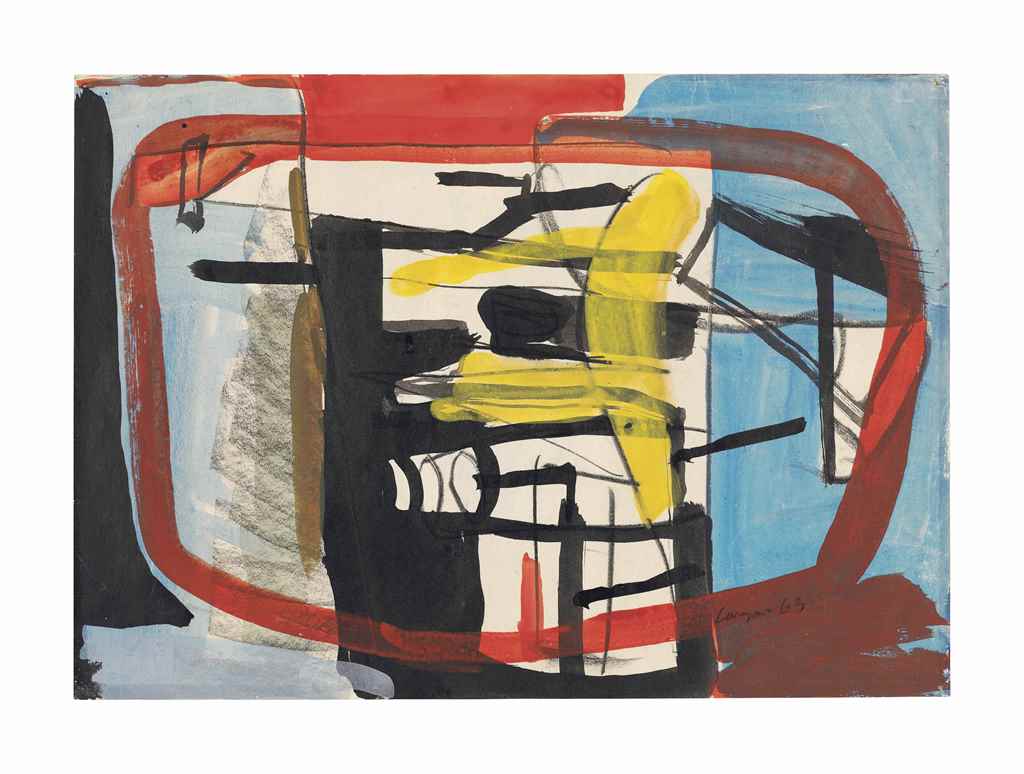
.jpg)
Testen Sie LotSearch und seine Premium-Features 7 Tage - ohne Kosten!
Lassen Sie sich automatisch über neue Objekte in kommenden Auktionen benachrichtigen.
Suchauftrag anlegen